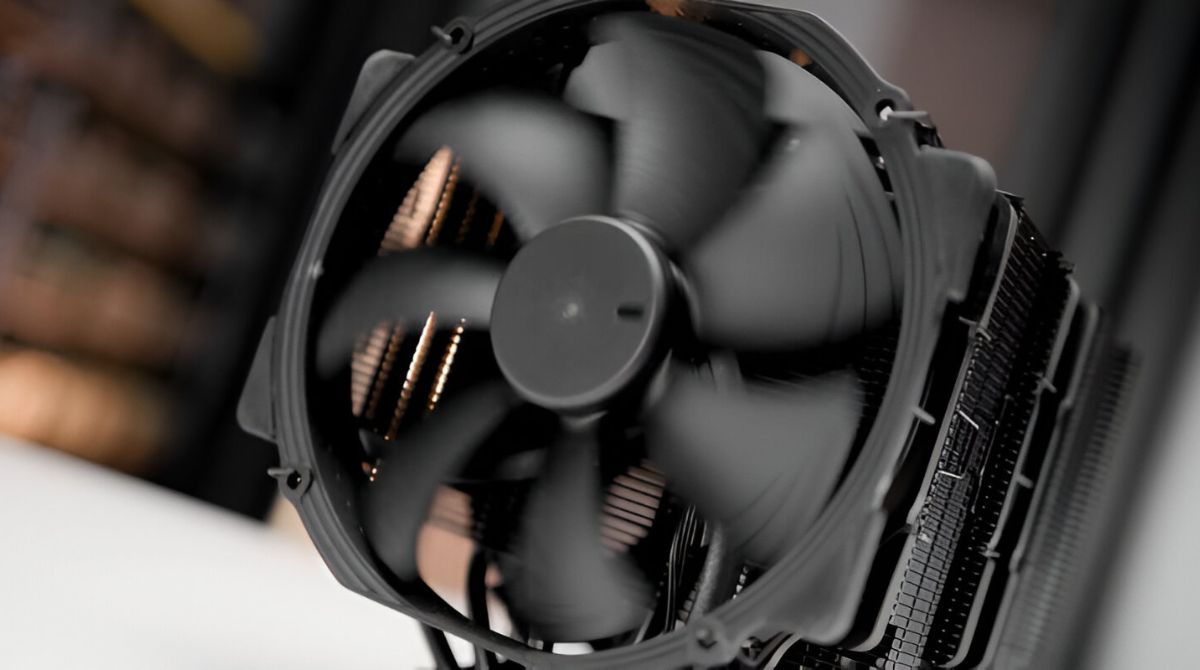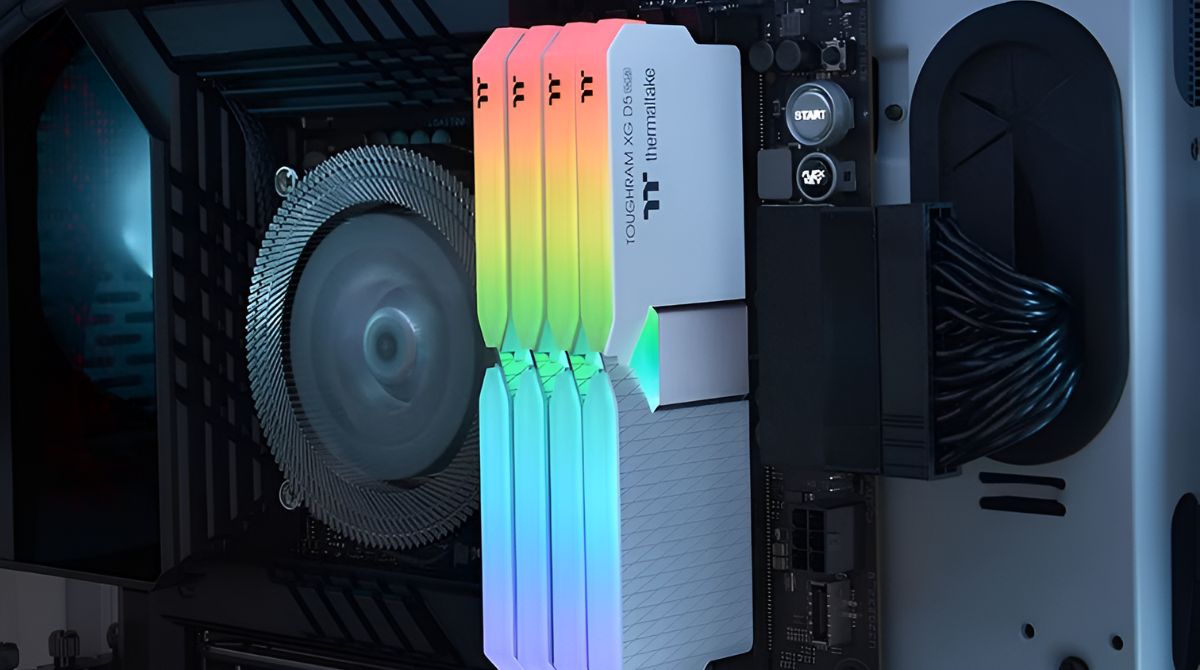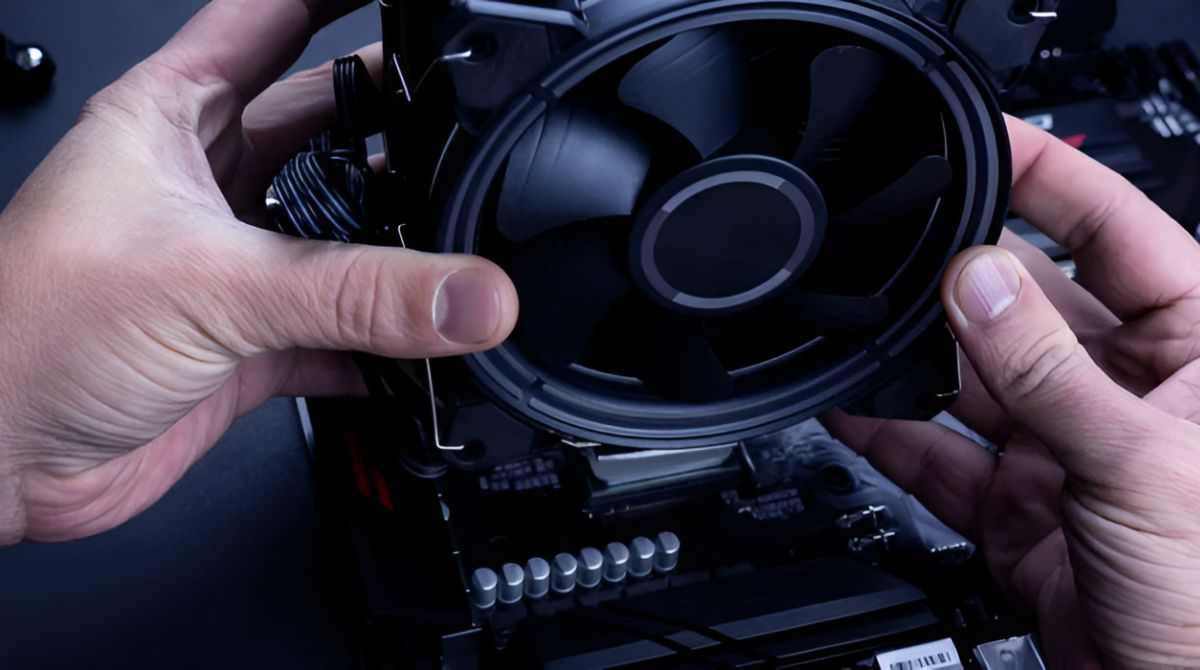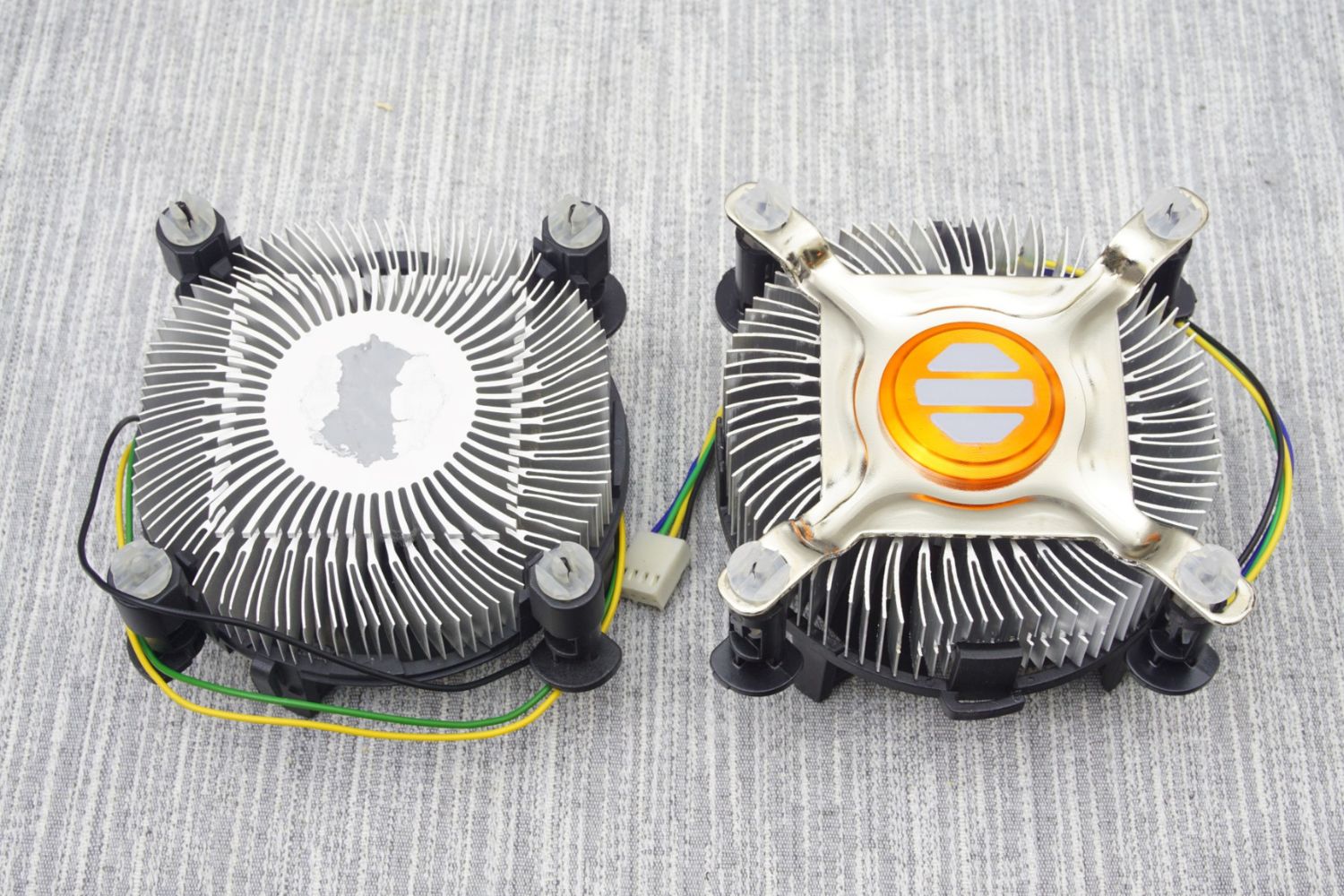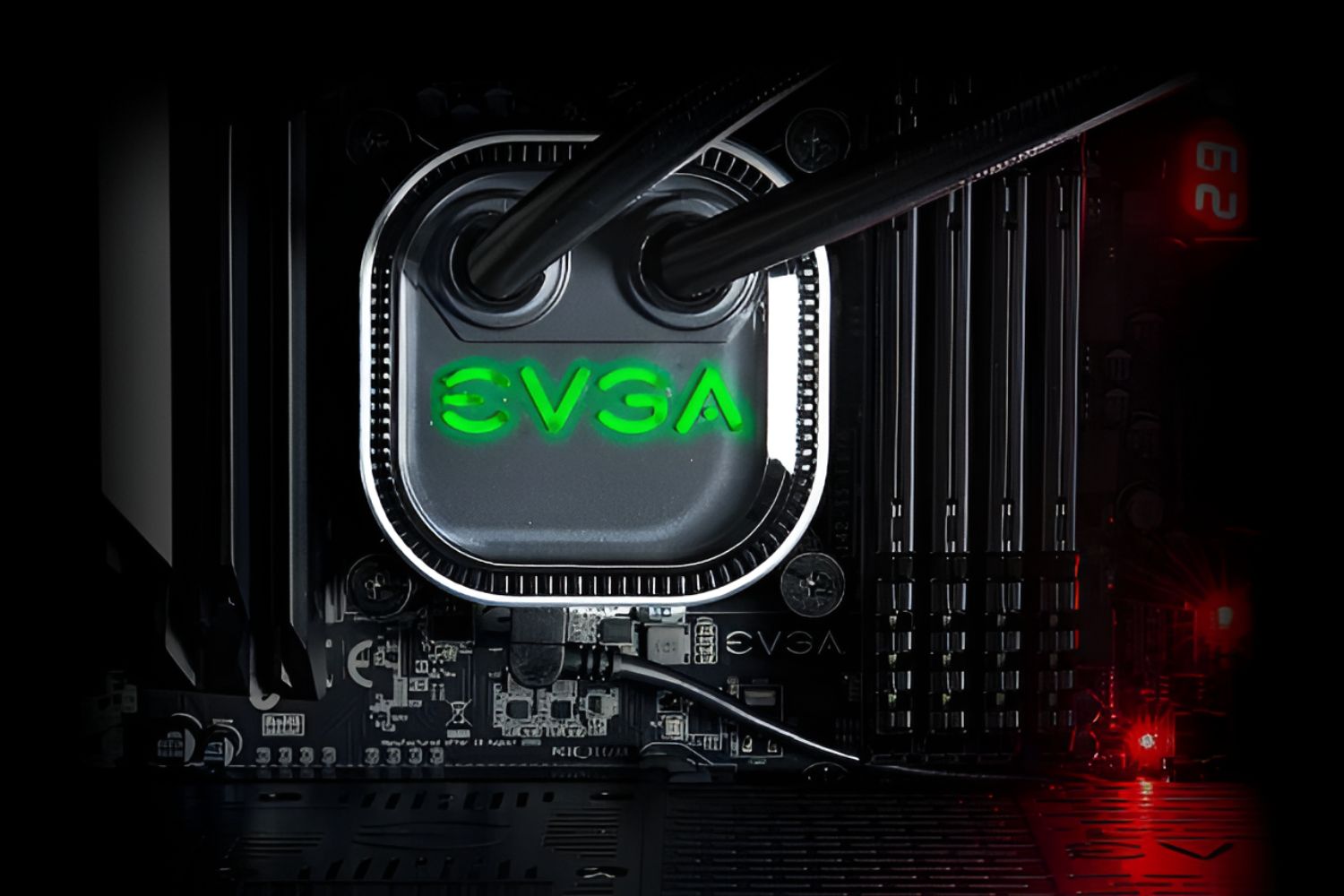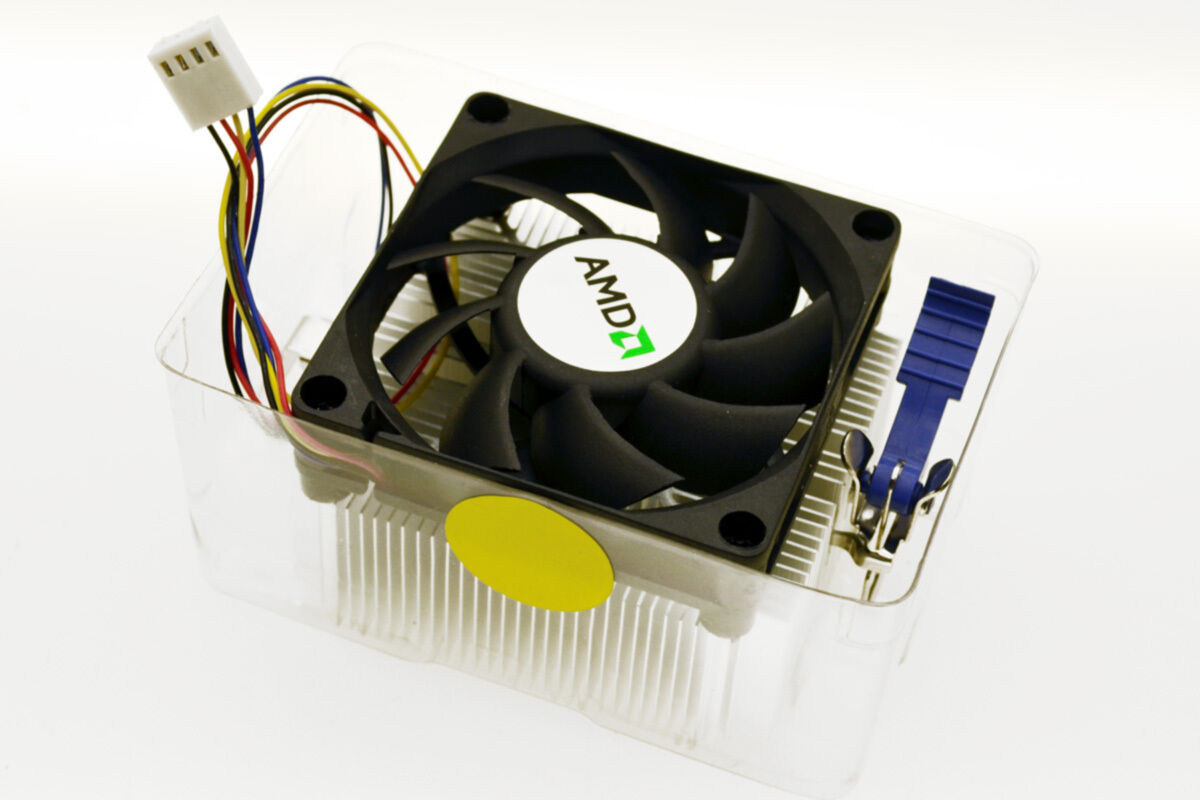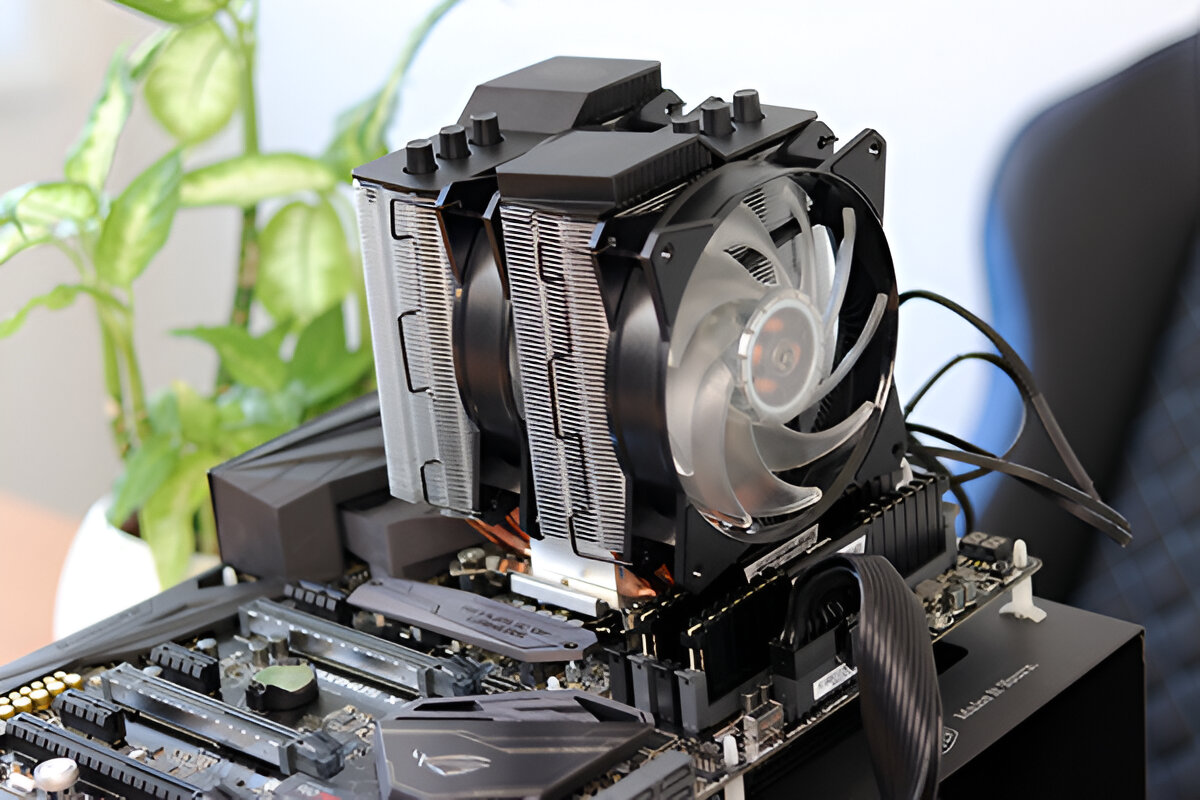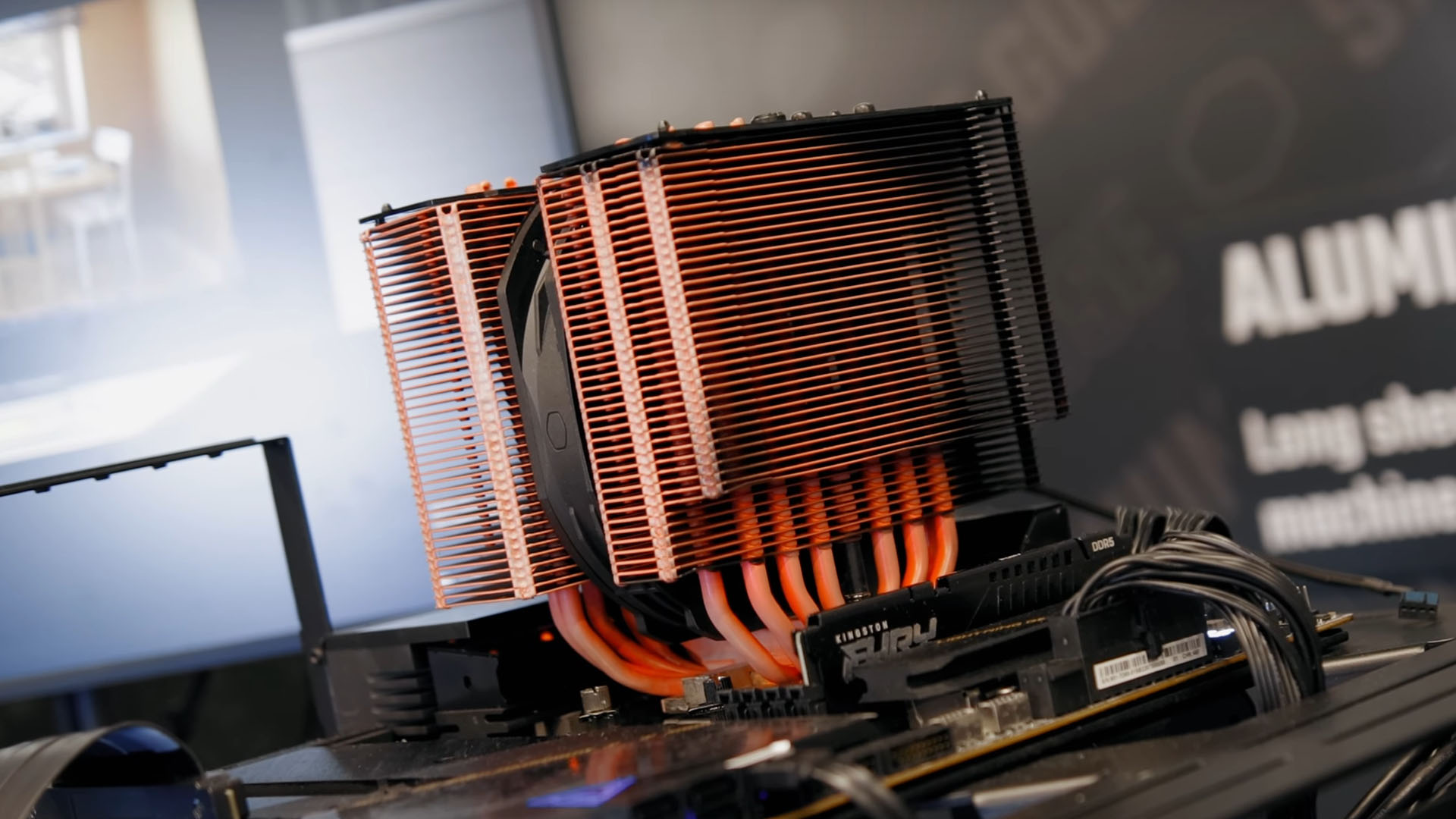What is a CPU cooler?
A CPU cooler is a crucial component of a computer system that helps maintain the optimal operating temperature of the central processing unit (CPU). The CPU is one of the most critical and power-hungry components in a computer, generating a significant amount of heat during operation. If left unchecked, excessive heat can damage the CPU and lead to system instability or even failure.
The primary function of a CPU cooler is to dissipate heat and prevent the CPU from overheating. It does this by utilizing various cooling methods, such as air cooling or liquid cooling, to transfer the heat away from the CPU and disperse it into the surrounding environment. A CPU cooler typically consists of a heatsink, which is a metal fin structure that provides a large surface area for heat dissipation, and a fan or water block to facilitate the cooling process.
Without a CPU cooler, the CPU’s temperature can skyrocket, negatively impacting its performance and lifespan. High temperatures can cause thermal throttling, where the CPU reduces its clock speed to prevent overheating. This can result in a significant drop in performance, leading to sluggish system operation, frequent crashes, and even system shutdowns.
Furthermore, prolonged exposure to high temperatures can cause permanent damage to the CPU, reducing its overall lifespan and potentially requiring an expensive replacement. Therefore, investing in a reliable CPU cooler is crucial, especially if you engage in resource-intensive tasks such as gaming, video editing, or 3D rendering that place a high demand on the CPU.
Now that you understand what a CPU cooler is and its importance, let’s explore the signs that indicate you may need a CPU cooler.
Why do I need a CPU cooler?
A CPU cooler is not just a luxury but a necessity for any computer system. Here are several reasons why you need a CPU cooler:
- Temperature regulation: The CPU generates a significant amount of heat while operating. Without a CPU cooler, the temperature can quickly rise to dangerous levels, leading to thermal throttling, system instability, and potential damage to the CPU.
- Improved performance: Excessive heat can negatively impact the performance of your CPU. By keeping the temperatures in check with a CPU cooler, you can ensure that your CPU operates at its optimal performance, allowing for smoother multitasking, faster processing, and better overall system responsiveness.
- Extended lifespan of your CPU: Overheating can significantly reduce the lifespan of your CPU. By investing in a quality CPU cooler, you can prevent overheating and protect your CPU from potential damage, thereby extending its overall lifespan.
- Quiet operation: Some high-performance CPUs require robust cooling solutions, and without a proper CPU cooler, the fans on the CPU can become loud and create noise distractions. Using a CPU cooler with efficient cooling capabilities can help maintain lower operating temperatures and minimize fan noise, ensuring a quieter computing experience.
- Overclocking compatibility: If you are interested in overclocking your CPU to push it beyond its default performance limits, a CPU cooler is essential. Overclocking increases the heat output of the CPU, and a reliable cooler is necessary to dissipate the extra heat and prevent thermal issues.
Whether you are a casual computer user or a dedicated gamer or professional, a CPU cooler is indispensable for maintaining the health, performance, and longevity of your computer system. It is a vital investment that allows you to optimize your CPU’s potential and prevent any potential issues related to overheating.
Now that you understand why a CPU cooler is essential, let’s explore the signs that indicate you may need a CPU cooler.
Signs that you may need a CPU cooler
As the central processing unit (CPU) is the powerhouse of your computer, it is crucial to watch out for signs that indicate you may need a CPU cooler. Here are some common indicators:
- High CPU temperatures: If you notice that your CPU temperatures are consistently high, reaching levels above the manufacturer’s recommended limits, it is a clear sign that you need a CPU cooler. You can monitor CPU temperatures using software utilities like HWMonitor or Core Temp.
- Frequent system crashes or instability: Overheating CPUs can cause your system to become unstable, leading to frequent crashes, random reboots, or even the dreaded “blue screen of death” (BSOD). These symptoms indicate that your CPU requires adequate cooling to maintain stable operation.
- Noisy or excessively loud fan noises: If you notice that your computer fans, particularly the CPU fan, are constantly running at high speeds and producing loud noises, it may indicate that your CPU is experiencing excessive heat. A CPU cooler can help regulate temperatures and reduce fan noise.
- Sluggish performance or slow processing: Inadequate cooling can lead to thermal throttling, where the CPU reduces its clock speed to prevent overheating. This results in a significant drop in performance, causing your computer to feel sluggish and slow during demanding tasks.
- Visible signs of overheating: If you physically inspect your computer and notice that the area around the CPU heatsink is excessively hot to the touch, or if you observe discoloration or burnt marks on the CPU or motherboard, it’s a clear indication that your CPU is overheating.
If you experience any of these signs, it is imperative to address the cooling issue promptly. Investing in a CPU cooler will help regulate temperatures, prevent overheating, and keep your CPU functioning optimally. By doing so, you can ensure the longevity and performance of your computer system.
Now that you understand the signs that indicate you may need a CPU cooler, let’s explore the benefits of using a CPU cooler.
Benefits of using a CPU cooler
Using a CPU cooler offers numerous benefits that contribute to the overall performance, stability, and longevity of your computer system. Here are some key advantages of using a CPU cooler:
- Temperature regulation: The primary benefit of a CPU cooler is its ability to regulate the temperature of your CPU. By dissipating excess heat, a CPU cooler prevents the CPU from overheating, which can lead to performance issues and potential hardware damage.
- Improved performance: A CPU cooler allows your CPU to operate at lower temperatures, reducing the chances of thermal throttling. This leads to improved performance, faster processing speeds, and smoother multitasking, enabling you to handle resource-intensive tasks more efficiently.
- Extended lifespan of your CPU: Overheating can significantly shorten the lifespan of your CPU. By keeping temperatures in check with a CPU cooler, you can safeguard your CPU from potential damage and ensure it lasts longer, saving you money on costly replacements.
- Quiet operation: Many CPU coolers come equipped with quiet fans or advanced cooling technologies that minimize noise levels. This allows for a quieter computing experience, reducing distractions and enhancing overall user comfort.
- Overclocking potential: If you are interested in pushing your CPU beyond its factory-set limits through overclocking, a CPU cooler is a must. Overclocking generates more heat, and a dedicated cooler helps dissipate that heat, enabling you to achieve higher clock speeds and improved performance without sacrificing stability.
- Enhanced system stability: By preventing the CPU from overheating, a CPU cooler plays a vital role in maintaining system stability. It reduces the chances of crashes, freezes, and random reboots, ensuring a reliable and consistent computing experience.
By investing in a reliable CPU cooler, you can optimize the performance, extend the lifespan, and enhance the overall stability of your computer system. Whether you are a casual user or a hardcore gamer, having a well-cooled CPU is essential for achieving maximum efficiency and avoiding costly issues caused by overheating.
Now that you understand the benefits of using a CPU cooler, let’s explore the different types of CPU coolers available.
Different types of CPU coolers
When it comes to CPU coolers, there are several different types available, each with its own advantages and considerations. Here are the most common types of CPU coolers:
- Air coolers: Air coolers are the most popular and widely used CPU cooling solution. They consist of a heatsink, typically made of metal fins or pipes, and one or more fans. The heatsink conducts heat away from the CPU, while the fans blow air over the heatsink to dissipate the heat. Air coolers are generally affordable, easy to install, and suitable for most computer systems.
- Liquid coolers: Liquid coolers, also known as all-in-one (AIO) liquid coolers, use a closed-loop system to cool the CPU. They consist of a liquid-filled radiator, tubes, a water block/pump, and fans. The liquid absorbs heat from the CPU, which is then transferred to the radiator where it is cooled by the fans. Liquid coolers provide excellent cooling performance and are ideal for overclocking and high-end systems but tend to be more expensive and may require additional installation effort.
- Low-profile coolers: Low-profile coolers are designed for compact computer cases or systems with limited space. They feature a smaller heatsink and fan combination to fit within the space constraints. While they may not provide the same level of cooling performance as larger coolers, they are suitable for small form factor builds.
- Passive coolers: Passive coolers rely solely on the natural convection of air to dissipate heat. They are fanless and use a large heatsink to passively cool the CPU. Passive coolers are often used in systems that require silent operation, such as media centers or home theater PCs. However, they are typically less efficient in dissipating heat compared to active cooling solutions.
When choosing a CPU cooler, consider factors such as your CPU’s power and cooling requirements, the size of your computer case, noise levels, budget, and any specific preferences or constraints you may have. Each type of cooler has its own strengths and limitations, so it’s essential to select one that best suits your needs.
Now that you are familiar with the different types of CPU coolers, let’s explore the factors to consider when choosing a CPU cooler.
Factors to consider when choosing a CPU cooler
When selecting a CPU cooler, it’s important to consider several factors to ensure optimal cooling performance and compatibility with your system. Here are some key factors to keep in mind:
- CPU socket compatibility: Make sure the CPU cooler you choose is compatible with your motherboard’s CPU socket. Different sockets require specific mounting mechanisms, so check the specifications of both your CPU and motherboard to ensure compatibility.
- Thermal design power (TDP): The TDP of your CPU indicates its maximum heat output. Select a CPU cooler with a TDP rating that matches or exceeds your CPU’s TDP to ensure effective heat dissipation.
- Cooling performance: Consider the cooling performance you require based on your CPU’s power and your usage needs. If you plan on overclocking or running demanding tasks, opt for a cooler with higher cooling capacity and airflow.
- Physical dimensions: Check the dimensions of the CPU cooler to ensure it will fit within your computer case. Consider factors like clearance for RAM modules, PCIe slots, and any other components that may obstruct the installation of the cooler.
- Noise levels: If noise is a concern for you, look for a CPU cooler with low noise levels. Check the manufacturer’s specifications and user reviews to get an idea of the noise generated by the cooler under different operating conditions.
- Budget: Determine your budget for a CPU cooler. There is a wide range of coolers available at various price points, so decide on a budget range that suits your needs without compromising on cooling performance and quality.
- Installation complexity: Consider the ease of installation, especially if you are not experienced with hardware installations. Some coolers may require additional steps or tools for installation, so check user reviews or installation guides to assess the ease of installation.
- Reviews and recommendations: Read reviews, watch videos, and seek recommendations from reliable sources to gather insights on the performance, reliability, and user experiences of different CPU coolers. This can help you make an informed decision.
By taking these factors into account, you can narrow down your options and choose a CPU cooler that meets your requirements, allowing for efficient and reliable cooling for your CPU.
Now that you understand the factors to consider when choosing a CPU cooler, let’s move on to learning how to install a CPU cooler.
How to install a CPU cooler
Installing a CPU cooler is a relatively straightforward process. Follow these general steps to install a CPU cooler:
- Gather the necessary tools: Before you begin, ensure you have the required tools, including a screwdriver, thermal paste, and any additional mounting accessories provided with the CPU cooler.
- Prepare your computer: Power off your computer and unplug it from the power source. Open your computer case and remove the side panel to access the CPU socket area.
- Remove the old cooler (if applicable): If you are replacing an existing CPU cooler, carefully remove it by disconnecting any cables or brackets securing it to the motherboard. Clean off any residue from the previous thermal paste on the CPU surface using isopropyl alcohol and a lint-free cloth.
- Apply thermal paste: Apply a small amount of thermal paste to the center of the CPU surface. The paste helps improve heat transfer between the CPU and the cooler. Use an appropriate method, such as a pea-sized dot or a thin line, depending on the manufacturer’s instructions.
- Mount the CPU cooler: Place the CPU cooler on top of the CPU, aligning the mounting holes on the cooler with the corresponding holes on the motherboard. Gently press down to ensure a secure fit.
- Secure the cooler: Depending on the type of CPU cooler, secure it to the motherboard using the provided brackets, screws, or mounting clips. Ensure the cooler is firmly attached but avoid over-tightening the screws to prevent damage to the CPU or motherboard.
- Connect the fan (if applicable): If your CPU cooler has a fan, connect the fan cable to the CPU fan header on the motherboard. Refer to your motherboard’s manual to locate the appropriate header.
- Reassemble your computer: Once the CPU cooler is securely installed, replace the computer case’s side panel. Ensure all cables and components are properly connected, and then plug in and power on your computer.
- Monitor temperatures: After installation, monitor your CPU temperatures using software utilities to ensure the cooler is functioning correctly and keeping temperatures within safe limits.
Note: The above steps provide a general guideline for installing a CPU cooler. However, specific instructions may vary depending on the manufacturer and model of your CPU cooler. It is crucial to refer to the manufacturer’s manual or installation guide for precise instructions tailored to your specific cooler.
With the CPU cooler properly installed, you can enjoy improved cooling performance, ensuring the longevity and optimal functioning of your CPU.
Now that you know how to install a CPU cooler, let’s address some common CPU cooling issues and how to troubleshoot them.
Troubleshooting common CPU cooling issues
While a CPU cooler is designed to keep your CPU operating at safe temperatures, it is not uncommon to encounter cooling issues. Here are some common CPU cooling issues and troubleshooting steps to help resolve them:
- High CPU temperatures: If your CPU temperatures are consistently high, ensure that the CPU cooler is properly installed and securely mounted. Ensure that the thermal paste is applied correctly, and the heatsink and fans are free from dust or debris. Consider cleaning the cooler and reapplying thermal paste if necessary. Additionally, check that the CPU fan is running at an appropriate speed and consider adjusting the fan curve in the BIOS.
- Fan noise or excessive vibrations: If the CPU cooler fan is making loud noises or causing vibrations, check that the fan blades are not obstructed by cables, components, or dust. Ensure that the fan is securely mounted and consider adjusting the fan speed settings in the BIOS to strike a balance between cooling performance and noise levels. If necessary, replace the fan with a quieter model.
- Uneven temperatures across the CPU: If you notice uneven temperatures across different areas of the CPU, it could indicate poor contact between the CPU and the cooler. Ensure that the cooler is mounted evenly and securely, with the proper amount of thermal paste applied. If the issue persists, consider reseating the cooler and double-checking the mounting mechanism.
- Thermal throttling or system instability: If your CPU is experiencing thermal throttling or frequent system crashes, check the CPU cooler’s performance and ensure that it is adequate for your CPU’s heat output. Confirm that the cooler’s fan and heatsink are not obstructed or clogged with dust, and that the thermal paste is applied correctly. If the issue persists, consider upgrading to a more powerful CPU cooler.
- System not powering on: In some cases, an improperly installed or malfunctioning CPU cooler can prevent the system from powering on. Ensure that all connections are properly seated, including the CPU fan header and any additional power connections required by the cooler. Check that the cooler is compatible with your motherboard and CPU, and consider removing and reinstalling the cooler if necessary.
If you are uncertain or uncomfortable troubleshooting CPU cooling issues on your own, it is recommended to seek the assistance of a professional or consult the manufacturer’s support resources for further guidance.
By addressing and resolving common CPU cooling issues, you can ensure that your CPU maintains optimal operating temperatures and overall system stability.
Now that you are familiar with troubleshooting CPU cooling issues, let’s explore some maintenance tips to keep your CPU cooler in excellent condition.
Maintenance tips for a CPU cooler
Maintaining your CPU cooler is essential to ensure its optimal performance and longevity. Here are some maintenance tips to keep your CPU cooler in excellent condition:
- Regular cleaning: Over time, dust and debris can accumulate on the CPU cooler’s heatsink and fans, impeding airflow and reducing cooling efficiency. Periodically clean the cooler using compressed air, a soft brush, or a vacuum cleaner on low suction to remove dust and debris. Be sure to power off your computer and disconnect it from the power source before cleaning.
- Inspect and replace fans: Check the CPU cooler’s fans for any signs of damage, excessive noise, or reduced performance. If a fan is not functioning properly, consider replacing it promptly to maintain proper cooling. Additionally, ensure that the fan blades are clean and free from obstructions.
- Replace thermal paste: Over time, thermal paste can deteriorate and lose its effectiveness, resulting in reduced heat transfer and cooling performance. Depending on the manufacturer’s recommendations, consider replacing the thermal paste between the CPU and the cooler every 1-2 years, or when you notice high temperatures or unstable system performance.
- Monitor temperatures: Regularly monitor your CPU temperatures using software utilities to ensure that your cooler is effectively managing heat. If you notice a sudden increase in temperatures or any abnormal behavior, investigate the issue and take necessary steps to address it promptly.
- Check for loose connections: Periodically inspect the CPU cooler’s mounting mechanism and ensure that all screws, brackets, and fittings are securely tightened. Loose connections can cause poor contact between the cooler and CPU, leading to inefficient cooling.
- Keep system airflow in mind: Ensure that the CPU cooler has adequate airflow within the computer case. Proper cable management, strategic placement of case fans, and ensuring that the cooler is not obstructed by other components can help optimize airflow and cooling performance.
Following these maintenance tips will help keep your CPU cooler running efficiently, maintain lower temperatures, and extend its lifespan. By doing so, you can ensure the longevity and optimal performance of your CPU, contributing to a stable and reliable computer system.
Now that you have learned some maintenance tips for your CPU cooler, it’s time to conclude this article.
Conclusion
A CPU cooler is an indispensable component of any computer system, crucial for maintaining optimal CPU temperatures and ensuring stable performance. By dissipating heat and preventing overheating, a CPU cooler protects your CPU from potential damage and extends its lifespan. Whether you are a casual user or a power user engaged in resource-intensive tasks like gaming or graphic design, a reliable CPU cooler is essential.
In this article, we discussed what a CPU cooler is and why you need one. We explored the signs that indicate you may need a CPU cooler, the benefits of using a CPU cooler, and the different types of CPU coolers available, including air coolers, liquid coolers, low-profile coolers, and passive coolers.
We also highlighted important factors to consider when choosing a CPU cooler, such as CPU socket compatibility, cooling performance, physical dimensions, noise levels, budget, and ease of installation. Additionally, we provided step-by-step instructions on how to install a CPU cooler and offered troubleshooting tips for common CPU cooling issues.
Lastly, we discussed the importance of regular maintenance for a CPU cooler, including cleaning, inspecting and replacing fans, replacing thermal paste, monitoring temperatures, and ensuring proper system airflow.
By following these guidelines, you can ensure that your CPU cooler operates efficiently, maintaining optimal temperatures and ensuring the longevity of your CPU. Take the time to evaluate your cooling needs, choose a suitable CPU cooler, and regularly maintain it to reap the benefits of a well-cooled CPU.







